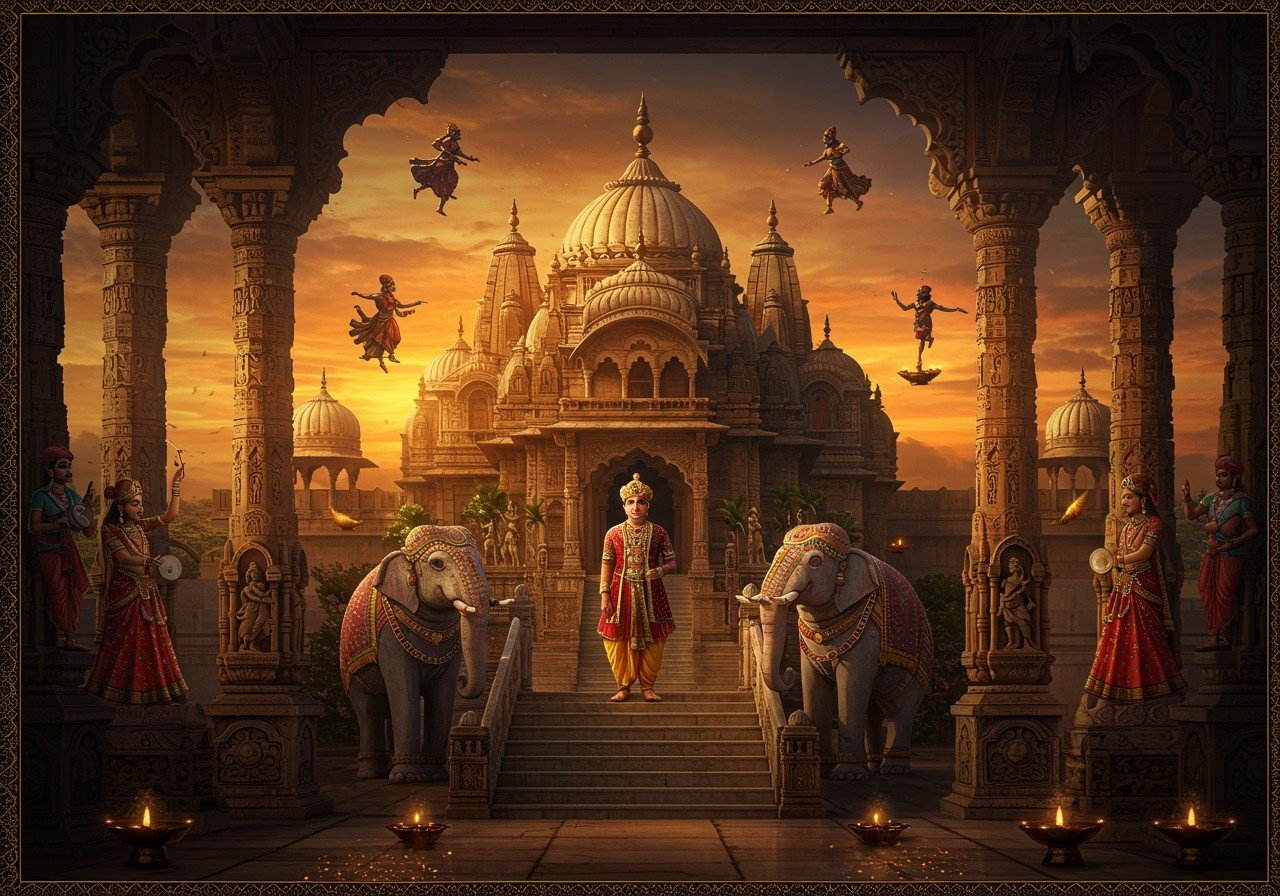
The Kalachuris of Kalyani, also known as the Later Chalukyas, held a prominent position in Indian history from the 10th to the 12th centuries. This blog post delves into their captivating history, cultural contributions, and enduring legacy, providing a comprehensive overview of their influence on the Indian subcontinent. This exploration will particularly resonate with those interested in Indian heritage, tradition, and history.
Historical Overview
Origins and Rise
Emerging from the Deccan region, primarily present-day Karnataka, the Kalachuris established their capital in Kalyani, a strategically significant city during their reign. Founding rulers like Tailapa II solidified the dynasty’s power through early conquests, setting the stage for their subsequent dominance.
Territorial Extent
The Kalachuris controlled a vast territory encompassing parts of Karnataka, Maharashtra, and Andhra Pradesh. Kalyani, their capital, served as a testament to their administrative and strategic prowess. Their sophisticated political structure and efficient administrative strategies enabled them to manage these extensive regions effectively.
Relations with Neighboring Powers
The Kalachuris engaged with powerful contemporaries like the Cholas, Rashtrakutas, and Western Chalukyas. These interactions involved both conflicts and alliances, shaping the dynasty’s trajectory. Prominent rulers such as Vikramaditya VI played pivotal roles in expanding and consolidating the Kalachuri empire. It is important to distinguish them from other Kalachuri dynasties like the Early Kalachuris of Mahishmati (550-625 AD), the Later Kalachuris of Tripuri (675-1212 AD), and the Kalachuris of Ratnapura (1121-1225 AD).
Cultural and Architectural Contributions
Patronage of the Arts
The Kalachuris were renowned patrons of art, literature, and education. They generously supported scholars, poets, and artisans, fostering a vibrant cultural atmosphere. Their patronage played a vital role in preserving and promoting regional traditions, enriching the cultural landscape of the time.
Architectural Marvels
The dynasty’s architectural achievements are evident in the magnificent temples and imposing fortresses they constructed, each exhibiting distinctive styles. Their religious monuments, particularly temples dedicated to Hindu deities, showcase their deep religious devotion. The innovative techniques and materials employed in Kalachuri architecture left a lasting impact on the region’s architectural landscape. You can explore similar architectural marvels at Badami Cave Temples and Sas Bahu Temples.
Festivals and Rituals
Cultural festivals and rituals held significant importance during the Kalachuri reign. These events not only reflected the dynasty’s commitment to preserving regional customs but also fostered a sense of community and shared identity. The influence of these traditions can still be observed in the region’s cultural practices. Learn more about temple rituals and traditions at Bhoganandishwara Temple.
Political and Social Organization
Governance
The Kalachuri governance model involved distinct roles for the king, the royal family, and the nobility. Local administration was meticulously organized, with administrative divisions ensuring effective governance throughout their territories.
Social Structure
A diverse social hierarchy existed within the Kalachuri dynasty, with each class contributing to the overall prosperity of the kingdom. Economic policies and trade practices were strategically implemented to support economic growth and stability.
Legal and Justice Systems
The Kalachuris maintained well-defined legal and justice systems. Their military organization was characterized by strategic approaches that ensured their continued dominance. Social welfare and public infrastructure were also prioritized, reflecting a commitment to the well-being of their subjects. Explore more about the Chandela Dynasty’s legacy at Kandariya Mahadeva Temple.
Connecting with the Kalachuri Legacy through Poojn.in
Poojn.in, India’s leading online store for cultural and religious goods, offers a unique opportunity to connect with the rich heritage of dynasties like the Kalachuris of Kalyani. Our extensive collection includes:
- Traditional Puja Items: Discover authentic copper and brass items reminiscent of those used during the Kalachuri period, allowing you to incorporate historical elements into your own spiritual practices. We offer a wide variety of puja samagri sets designed to follow historical traditions.
- Shiva Puja Essentials: Given the Kalachuris’ strong Shaivite connections, we provide complete Shiva puja sets, pure copper/brass abhishek items, traditional bel patra and rudraksha malas, and authentic dhoop and deepam items, enabling you to honor this important aspect of their heritage.
- Expert Guidance: Our knowledgeable team ensures that all items meet traditional specifications, and we provide detailed usage instructions and information about the cultural significance of each product, enhancing your understanding and appreciation of these historical practices.
Visit www.poojn.in today to explore our diverse collection and bring the rich traditions of the past into your present. We offer pan-India delivery, ensuring convenient access to authentic ritual items.
Browse our selection of brass puja items, including Brass Tir Kathi and Brass Trishul Kathi. You can also find beautiful brass idols such as Maa Kali Murti, Jagannath Balaram Subhadra Bigraha, and Brass Kamdhenu Cow.
Conclusion
The Kalachuris of Kalyani’s legacy remains deeply interwoven with the fabric of Indian history and culture. Their contributions to governance, art, architecture, and social structures stand as a testament to their commitment to both tradition and progress. Understanding their impact offers valuable insights into the historical and cultural evolution of southern India, enriching our appreciation for the complexities of the past and its enduring influence on the present.


